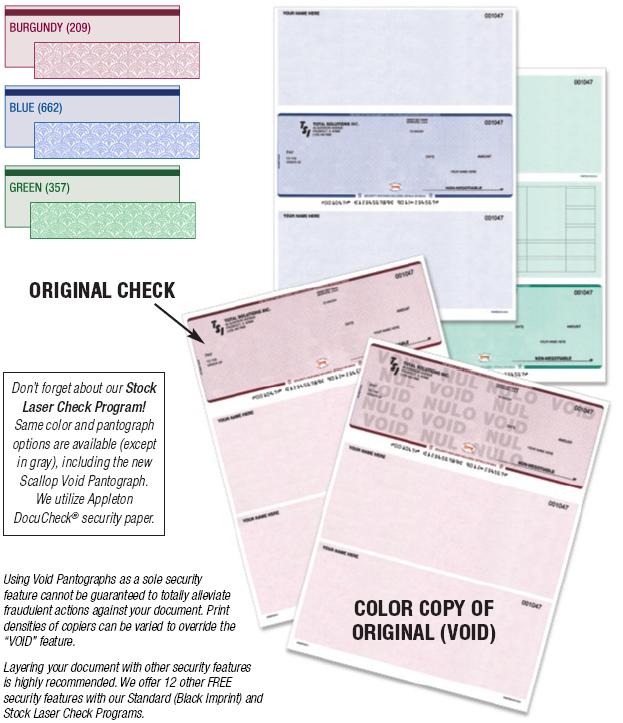

The method of claim 4 wherein the generating a pantograph foreground comprises combining two different dot patterns selected from the multiple combinations of dot size and dot placement on an X-Y grid.Ħ. The method of claim 1 wherein the generating a pantograph background comprises combining two different dot patterns selected from the multiple combinations of dot size and dot placement on an X-Y grid.ĥ. The method of claim 1 wherein the generating a pantograph foreground comprises combining two different dot patterns selected from the multiple combinations of dot size and dot placements on an X-Y grid.Ĥ. The method of claim 1 further comprising: printing the plurality of different void pantographs assessing visual blending of the foreground and background in the plurality of printed pantograph patterns scanning the printed pantograph patterns using a selected copy machine and assessing the degree that the foreground pantograph pattern stands out in the scanned copy.ģ. A method of generating a number of different void pantographs, the method comprising: (1) generating a dot pattern for a pantograph foreground by selecting from multiple combinations of dot size and dot placement on an X-Y grid (2) generating a dot pattern for a pantograph background by selecting from multiple combinations of dot size and dot placement on an X-Y grid (3) varying either the pantograph foreground or background pattern by changing dot placement and/or dot size while maintaining the other pantograph pattern static (4) combining the foreground and background pattern to generate a void pantograph and repeating steps (1) to (4) a plurality of times to generate a plurality of different void pantographs.Ģ. Print control program controlling printer connected to networkġ. Method for allowing users to specify multiple quality settings on mixed printoutsĭelivering a file to a server for printing Method of performing automated packaging and managing workflow in a commercial printing environmentĬellular telephone protocol adaptive printingĭistribution of printed information from electronic database SERVER AND PRINTER INTRODUCING METHOD UNDER THIN CLIENT ENVIRONMENT Positional Error Detection Method and Apparatus, and Computer-Readable Storage Medium


RASTERIZING VARIABLE AND NON-VARIABLE DATA FOR PRINTING Sitemap Page was generated in 0.READING METHOD, IMAGE FORMING METHOD, COMPUTER PROGRAM PRODUCT The most common type of pantograph today is the single arm pantograph (sometimes called 'Z'-shaped), which has evolved to provide a more compact and responsive design at high speeds. There are two types of pantographs: single arm and double arm. Artists specializing in miniatures use pantographs to achieve greater detail. Pantographs are used for reducing or enlarging engineering drawings and maps and for guiding cutting tools over complex paths.

Similarly one may ask, what is a pantograph machine?Ī pantograph engraving machine, or pantograph engraver, is a pantograph which uses a cutting tool at one position on the pantograph's mechanism to engrave (cut) into a workpiece a design traced out by a tracer or stylus at another position on the mechanism.Īlso, what was the pantograph replaced by? Pantograph has been replaced by modern ways of producing duplicates such as photocopying, mass printing and digital filing. BRIEF ABOUT PANTOGRAPH MILLING MACHINE AND DEVELOPMENT A pantograph is a mechanical linkage connected in a manner based on parallelograms so that the movement of one pen, in tracing an image, produces identical movements in a second pen.


 0 kommentar(er)
0 kommentar(er)
